As the end of the year approaches, deciduous bonsai don’t typically look their best. No matter – once the majority of leaves on these trees turn color or fall off, I pluck the remaining leaves. Removing old leaves exposes interior buds to sunlight and reduces hiding places for insects. It also forces me to look closely at branches I haven’t seen since the trees leafed out in spring.

Root over rock trident maple
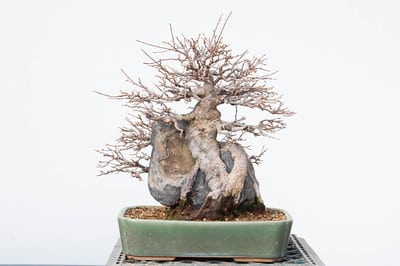
After removing old leaves
While removing the leaves on a trident maple I noticed some cracks in cut-paste covering a wound created by local vermin. As the cracks are a good sign that callus is developing, I removed the cut-paste and took a closer look.
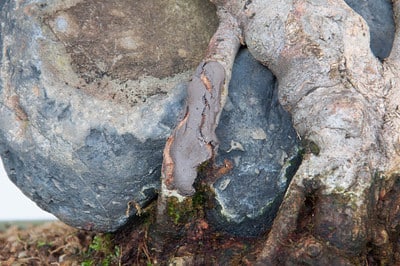
Cracks in cut-paste
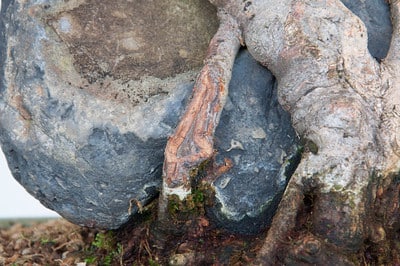
Callus on the move
I was happy to see that the wound is healing well. To help it along, I opened the margin of the callus with a grafting knife and re-sealed the wound with fresh cut-paste.
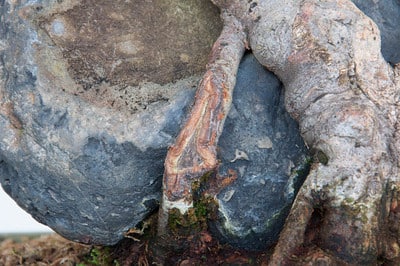
Opening the margin of the callus
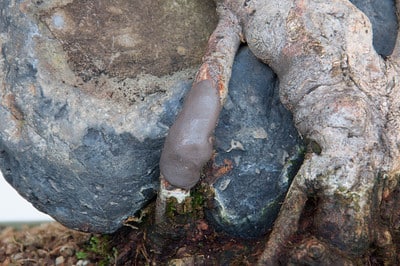
Fresh cut-paste
I next moved on to a Korean hornbeam. I removed the leaves and replaced the surface soil.
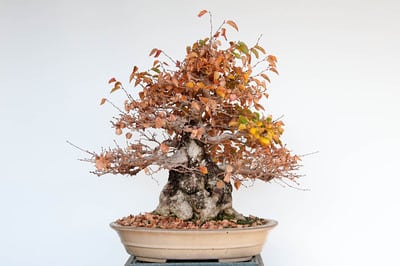
Korean hornbeam
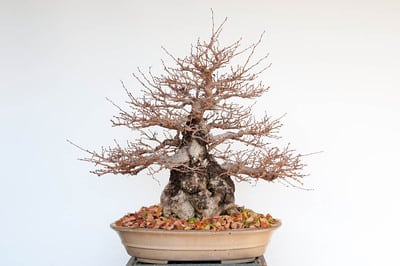
After plucking old leaves
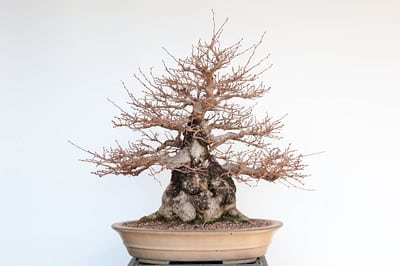
After replacing the surface soil
I was surprised to find the tree was quite dry despite watering the day before. Even with few leaves left the tree remained thirsty – a good reminder for me to water carefully throughout this transitional season.
Subscribe to Bonsai Tonight
New Posts Delivered Every Tuesday and Friday
Jake says
I miss the detailed instructions we’re used to from your other posts:
1. Branchlet with the leaf still on
2. Scissors in right hand held almost horizontally
3. Breath in (if leaf large, deeply)
4. Cut with one swift motion perpendicularly to the stem.
5. Branchlet without the leaf
6. Breath out
😉
alex says
Very Nice blog,
regards from ambonsai.blogspot.com.es
juan says
Mucho bueno, est magnifico por la Chiminia por favor.